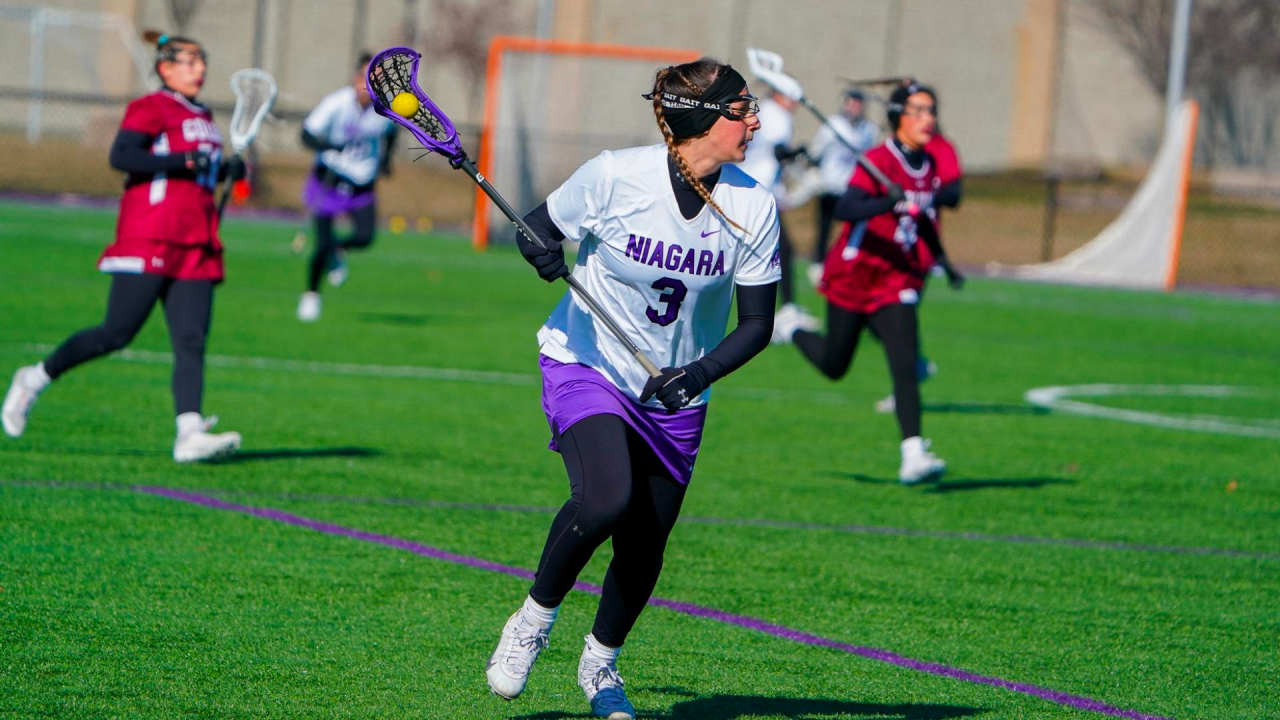Twitter was ablaze last Saturday night, my own personal feed included, after many witnessed a clear disparity in stream production between the Syracuse-Johns Hopkins men’s game and the rest of the men’s and women’s games played at The Crown Lacrosse Classic.
This all-day lacrosse affair was held in Charlotte, N.C., with the goal to bring the local lacrosse community out to witness high-level games throughout the day. The organizers accomplished this goal despite heavy rainfall, and the atmosphere on site looked awesome from what I could see from home.
What wasn’t as successful, however, was the different streaming quality for the nightcap rivalry men’s game versus the rest of the games played that day. When I tuned into the Johns Hopkins-Stony Brook women’s game — a top 15 battle that I was excited to watch — I saw a production that felt like a high school film crew. There wasn’t any sound, no announcers, the camera struggled to keep up, and there wasn’t an on-screen scoreboard for fans to follow. The two preceding matches were the same.
Not an hour after the final women’s game of the day finished, though, fans were privy to an entirely different experience for the Syracuse-JHU showdown. Paul Carcaterra and Anish Shroff were on site commentating for ESPN, there were multiple camera angles for instant replay, and there was a functioning scoreboard with a shot clock for fans to follow.
To have such a stark contrast in viewing experience for games played back-to-back at the same venue was astounding. All the men’s and women’s teams that played before the nightcap should have had the same level of production as the Hopkins-Cuse match. These players — male and female — deserve far better than the production level they received, and things should have been consistent across the board.
But let’s move to more positive topics now! With so much lacrosse to watch and impressive plays and players, it’s hard to focus on just one topic or theme to cover this week. So instead, we will cover a little bit of everything in this rendition of Taylor’s Takes.
IMPRESSIVE TEAMS
Drexel
Drexel is a team that continues to impress me. The Dragons have earned two solid wins against ranked opponents in Navy and Penn State. In those games, they outshot their opponents, limited turnovers and were efficient on their eight-meter opportunities. Even in their losses, they showed moments of brilliance. Goalkeeper Jenika Cuocco was recently added to the Tewaaraton Award Watch List after her stellar start to the season and continues to be the backbone to a stingy defense that’s limited all opponents to under 14 goals. Offensive star Corinne Bednarik is putting up huge numbers on the attacking end, while redshirt-freshman defender Alexia Louca is back from injury better than ever, making a huge impact defensively. Together, these three could push Drexel toward a successful postseason.
Niagara
Niagara is off to one of its best starts ever under head coach Wendy Stone. With its only loss to Arizona State, the Purple Eagles have found much success on offense thanks to multifaceted weapon Andra Savage. With Savage shooting above 50 percent and securing draws, the Eagles have been able to dominate possession and make the most of their opportunities. A huge win against Marquette has been the highlight victory so far, and I look forward to their games against Columbia and Fairfield. If they can dominate those the way they have other games, the Eagles will be a difficult opponent.
Harvard
Harvard’s performance this season, even after Tuesday’s loss to Duke, has been so outstanding. With the consistent production from attackers Callie Hem, Caroline Mullahy and Riley Campbell, the draw prowess of Maddie Barkate and a 50-plus-percent save rate from Chloe Provenzano, the Crimson have found their winning recipe. The competitive fire that Campbell plays with, combined with the crafty stickwork and feeding capabilities of Mullahy and poise of Hem makes the trio the three-headed monster of opposing defensive coordinators’ nightmares.
Fairfield
Other than a one-goal loss to open the season, Fairfield has had an impressive stretch in February and early March, including victories over Drexel, Albany and UConn. Attackers Libby Rowe and Elizabeth Talluto have been putting up solid numbers for the Stags thanks to their team’s ability to limit turnovers and clear successfully. These simple stats are easily in a team’s control, and their focus on both has helped increase scoring opportunities. I have March 23 circled on my calendar to see how Fairfield fairs against in-conference foe Niagara.





























































